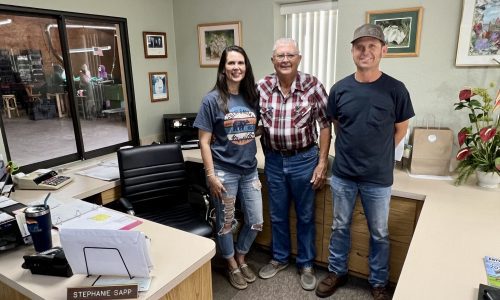By Katrina Salokar | East Lee County News
Lake Placid, Florida—once the undisputed “Caladium Capital of the World”—still proudly honors its colorful legacy. Tucked in Highlands County, this small town once produced 95% of the world’s caladium bulbs. While the industry has shrunk, its roots run deep, sustained by resilience, family tradition, and cautious optimism.
A Legacy in Bloom
From a peak of over 30 farms, only seven remain today. Loss of generational interest, rising land costs, and competition from other agricultural ventures have reshaped the landscape. Yet, a determined few continue to cultivate caladiums in the region’s fertile muck soil, keeping the tradition alive.
Each summer, the town celebrates its floral identity at the Caladium Festival, which this year takes place July 25th through 27th. The festival features blooming fields, historic tours, craft vendors, and food trucks—all honoring the heritage of the farmers who brought color to the world, one heart-shaped leaf at a time.
A Family Affair
Among the growers keeping this legacy alive is Lake Country Farms, Inc., operated by siblings Stephanie Sapp and David Harrison. They’re third-generation farmers, carrying on the work of their grandparents and parents, Lamar and Joyce Harrison.
“We’ve been doing this since before we could walk,” said Sapp. “It’s not just a crop to us—it’s part of who we are.”
Their fields stretch across the same dark, rich muck their family has worked for decades. It’s tough work—planting, harvesting, sorting, and shipping caladiums is as physical as it is delicate. And it’s done in the heat of the summer, under threat of storms, pests, and shifting market demands.
The Business of Beauty
Caladiums are grown for their striking foliage—white, pink, red, and green varieties with names like ‘Florida Sweetheart’ and ‘Red Flash.’ They’re shipped across the U.S. and abroad for use in landscapes, home gardens, and retail pots.
But for all their visual flair, the business is grounded in logistics, volume, and timing. Bulbs are harvested in late summer, cured, cleaned, sized, and stored for sale in the fall and winter. Farmers have to guess right—how much to grow, which varieties will sell, and how to price in a fluctuating economy.
“Some years we do really well,” said Harrison. “Other years, it’s break-even or worse. But we love it. It’s in our blood.”
Challenges in the Field
The industry isn’t without its hurdles:
- Climate risks like hurricanes and drought
- Labor shortages and high costs of operation
- Global competition from Central America and Asia
- Lack of youth entering the trade
“We’re trying to modernize where we can,” said Sapp, “but this kind of farming is still very hands-on. You can’t automate passion.”
A New Path Forward
As Southwest Florida’s ports expand, there’s cautious hope that international partnerships—especially in South America—could create new markets for Lake Placid’s growers. Regional advocates are exploring ways to support agricultural exporters and promote caladiums as part of Florida’s rural brand.
“We’ve got something special here,” said Harrison. “But we need people to know about it. To support it. To keep it alive.”
Come See for Yourself
The 2025 Lake Placid Caladium Festival promises a vibrant celebration of both flowers and farming. Tour the fields, meet the growers, and experience the heritage for yourself.
📍 Downtown Lake Placid
📅 July 25–27, 2025
🌐 www.lpfla.com








